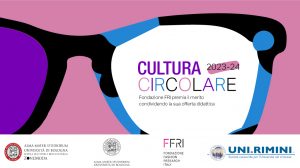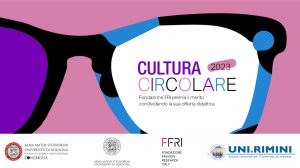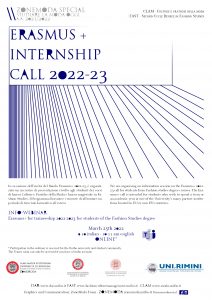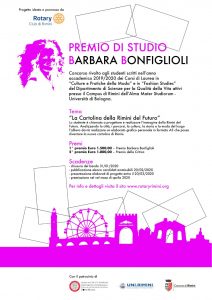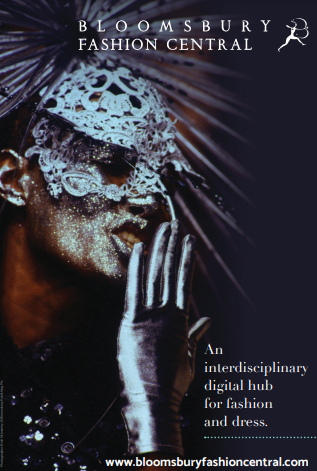
Bloomsbery Resources

English version
Bloomsbery Resources
Starting from January 2022, the Berg Fashion Library and the Fashion Photography Archive will be added to the scientific resources and databases that the University of Bologna makes available free of charge to students and researchers. These two scientific resources are part of the Bloomsbury Fashion Central, comprised of several databases containing important reference works, exclusive articles, academic eBooks, case studies, biographies, textbooks and multimedia content.
The new addition to the AlmaRE collections will be particularly significant for the students of both Degree Courses in fashion – Bachelor in Fashion Cultures and Practices and Master in Fashion Studies. While we are waiting for these important databases to become available, here’s brief introduction to what we can expect.
The Berg Fashion Library is the premier resource for fashion studies students and researchers. Due to its interdisciplinary nature, and the great visual and integrated content, it is a prestigious source for researchers in the fields of fashion, but also for those interested in museum studies, cultural studies, anthropology and more. The Library is organized in few sub-categories, while providing access to a huge number of unique online-only articles that have been specially commissioned for the site.
The Berg Encyclopedia of World Dress and Fashion comprised of 2,000 images, many of which unpublished or rare. Moreover, there are more than 800 in-depth articles on countries, themes, cultural groups and types of clothing, special articles on sources and testimonies for each large geographical area, aimed at exploring concepts such as the dressed and adorned body across cultures and throughout history with a global approach. “Snapshot” articles with examples and case studies, valuable bibliographies, and suggestions for further reading for each article and cross-references could also be consulted.
In addition to the Encyclopedia, the Berg Fashion Library also includes the Reference section with Classic and Modern Writings on Fashion, the A – Z of Fashion, and The Dictionary of Fashion History, as well as the database of over 190 academic e-books covering important classical and modern writings on fashion.
Furthermore, the collection consists of a Museum directory that contains information and example images interconnected with further information and research ideas, as well as of a section dedicated to Museum exhibitions – a unique exhibition archive, showcasing historical exhibition images from museums around the world. Added to this are the Image partnerships, with over 17000 colored images, and the rich Research and Learning tools.
Curated by director of the Museum at the Fashion Institute of Technology and internationally renowned fashion historian Valerie Steele, the Fashion Photography Archive is an exceptionally rich and valuable resource for anyone wishing to undertake research in the field of fashion studies. The archive boasts an expanding collection of already more than 775,000 high-resolution digital photographs, including commercial, museum, catwalk, and street-style photographs, some of which taken by prominent Irish fashion photographer Niall McInerney throughout his life-long career. As a general overview, the catalogue of the Valerie Steele Core Collection is available for download in excel format listing collections sorted alphabetically by designer name, season, and year (e.g. Alberta Ferretti FW1993, Alexander Mcqueen FW1994, Balenciaga FW1996). The vast image database is easily accessible via the search bar on the Homepage or by simply clicking on the hyperlink labelled as Browse on the top menu. This section is noteworthy, as it offers improved content discoverability through both basic and advanced search functionality, as well as through an integrated taxonomy which combines images with a wide range of related content (I.G. videos, academic articles, e-book chapters, over 920 dictionary entries and bibliographic guides compiled by scholars and experts in the field).
Such dynamic search is enabled by the detailed metadata used to mark essential information about each photograph, allowing researchers to easily map out and relate multiple subjects, trends, and designs across the database through selected indexes. The keywords showcased next to each search result encourage to further explore the collection and include labels like timeframe (e.g. 1960-1969), materials (e.g. Animal, Hide, Bark, Bone, Cork, Faux Fur), colour, garment type (Dresses, Formal Wear), source (e.g. museum object) and many more.
In addition to these basic functions, other interesting search options are available on the Browse section for those wishing to sort the content by specific categories (i.g. Fashion businesses, Organizations and design houses, People, Period, Place, Textiles, Materials and Colors). These pages are great sources of inspiration for fashion design students, but also fashion history students and for anyone looking for pre-formed information trajectories.
Lastly, an interesting alternative browsing option is the Timeline section, titled “Global Dress and Fashion: Antiquity-Present”, where photographs are placed in chronological order with accompanying historical information and insights on fashion history.
How to get access:
The Proxy is a remote access service that allows you to access electronic resources of the University of Bologna from the comfort of your home. In this manner, the otherwise restricted-access databases, periodicals, electronic books, and other, could be accessed by simple logging in with your institutional credentials.
Log in with your institutional credentials (@ unibo.it, @ studio.unibo.it) to the Proxy login page and continue browsing using the links on the pages, without opening new browser windows or manually entering addresses in the navigation bar.
It is possible to search the Berg Fashion Library from the search bar at the top right, otherwise visit the “AlmaRE Collections” page and select the “Databases” link to check the detailed list of databases that can be accessed with your own credentials.
To use the Proxy it is not necessary to install any software or browser extension. The rules of access and use are available on the Rules page of the Proxy service for the University of Bologna. Professors, students, PhD students, research fellows, technical-administrative staff, accredited collaborators, alumni and retirees of the University of Bologna, can access the service. Access is strictly personal and allowed only to users enabled through institutional credentials.
Credits
The access is possible thanks to the subscription offered by the Degree Courses in Fashion Cultures and Practices and in Fashion Studies and by the Central Library of the Rimini Campus in favor of the entire Unibo academic community.
Versione Italiana
A partire da gennaio 2022, la Berg Fashion Library e il Fashion Photography Archive andranno ad aggiungersi alle risorse scientifiche e alle banche dati che l’Università di Bologna mette gratuitamente a disposizione per studenti e ricercatori. Queste due risorse scientifiche fanno parte del Bloomsbury Fashion Central, composto da diversi database contenenti importanti opere di riferimento, articoli esclusivi, eBook accademici, casi di studio, biografie, libri di testo e contenuti multimediali.
La novità nelle collezioni AlmaRE sarà particolarmente significativa per gli studenti dei corsi di laurea e laurea magistrale in moda – Culture e Pratiche della Moda e Fashion Studies. Mentre aspettiamo che questi importanti database diventino disponibili, ecco una breve introduzione a ciò che sarà disponibile.
La Berg Fashion Library è la principale risorsa per studenti e ricercatori di studi di moda. Per la sua natura interdisciplinare, e il grande contenuto visivo e integrato, è una fonte prestigiosa per i ricercatori nel campo della moda, ma anche per coloro che sono interessati a studi museali, studi culturali, antropologia e altro ancora. La Biblioteca è organizzata in poche sottocategorie, fornendo accesso a un numero consistente di articoli unici disponibili solo online che sono stati appositamente commissionati per il sito.
La Berg Encyclopedia of World Dress and Fashion comprende 2.000 immagini, molte delle quali inedite o rare. Sono inoltre disponibili più di 800 approfondimenti su Paesi, temi, gruppi culturali e tipologie di abbigliamento, articoli speciali su fonti e testimonianze per ogni grande area geografica, volti ad esplorare concetti come il corpo vestito e adornato attraverso le culture e attraverso storia, con un approccio globale. Si possono inoltre consultare articoli “Snapshot” con esempi e casi studio, preziose bibliografie e suggerimenti di approfondimento per ogni articolo.
Oltre all’Enciclopedia, la Berg Fashion Library comprende anche la sezione Reference con Classic and Modern Writings on Fashion, the A – Z of Fashion, and The Dictionary of Fashion History nonché il database di oltre 190 e-book accademici che coprono importanti scritti sulla moda.
Inoltre, la collezione è costituita da una Museum Directory che contiene informazioni e immagini esemplificative interconnesse con ulteriori informazioni e spunti di ricerca. Inoltre, è presente una sezione dedicata alle mostre museali, un archivio di mostre unico, che permette di godere di immagini storiche di mostre provenienti da musei di tutto il mondo. A questa si aggiungono le Partnership Image, con oltre 17000 immagini a colori, e i ricchi strumenti di Ricerca e apprendimento.
Curato da Valerie Steele, direttrice del Museo del Fashion Institute of Technology, la Fashion Photography Archive è una risorsa eccezionalmente ricca e preziosa per chiunque desideri intraprendere ricerche nel campo degli studi di moda. L’archivio vanta una collezione in espansione di oltre 775.000 fotografie digitali ad alta risoluzione, tra cui fotografie commerciali, museali, da passerelle e street style, alcune delle quali scattate dal famoso fotografo di moda irlandese Niall McInerney. Per una panoramica generale, è disponibile per il download il catalogo della Valerie Steele Core Collection in formato Excel che elenca in ordine alfabetico le collezioni per nome di stilista, stagione e anno (es. Alberta Ferretti FW1993, Alexander Mcqueen FW1994, Balenciaga FW1996). Il vasto database di immagini è facilmente accessibile tramite la barra di ricerca sulla Homepage o semplicemente cliccando sul collegamento ipertestuale in alto. Questa sezione è degna di nota, in quanto offre una migliore rilevabilità dei contenuti attraverso funzionalità di ricerca sia di base che avanzate, nonché attraverso una tassonomia integrata che combina le immagini con un’ampia gamma di contenuti correlati (per esempio video, articoli accademici, capitoli di e-book, oltre 920 voci di dizionario e guide bibliografiche redatte da studiosi ed esperti del settore).
Tale ricerca dinamica è resa possibile dai metadati dettagliati utilizzati per contrassegnare le informazioni essenziali su ciascuna fotografia, consentendo ai ricercatori di mappare e mettere in relazione facilmente più soggetti, tendenze e modelli in tutto il database, attraverso indici selezionati. Le parole chiave mostrate accanto a ciascun risultato di ricerca incoraggiano ad esplorare ulteriormente la collezione e includono etichette come periodo (es. 1960-1969), materiali (es. Animal, Hide, Bark, Bone, Cork, Faux Fur), colore, tipo di indumento (Abiti, Abbigliamento formale), fonte (es. oggetto da museo) e molti altri.
Oltre a queste funzioni, dono disponibili altre interessanti opzioni di ricerca per chi desidera ordinare i contenuti per categorie specifiche. Infine, un’interessante opzione di navigazione alternativa è la sezione Timeline, intitolata “Global Dress and Fashion: Antiquity-Present”, dove le fotografie sono disposte in ordine cronologico con accompagnamento di informazioni storiche e approfondimenti sulla storia della moda.
Come accedere:
Il Proxy è un servizio di accesso da remoto che permette di accedere alle risorse elettroniche dell’Università di Bologna comodamente da casa. In questo modo è possibile accedere a banche dati, periodici, libri elettronici e altro ad accesso altrimenti riservato, effettuando il semplice login con le proprie credenziali istituzionali.
Accedi con le tue credenziali istituzionali (@unibo.it, @studio.unibo.it) alla pagina di login del Proxy e continua la navigazione utilizzando i link presenti nelle pagine, senza aprire nuove finestre del browser o inserire manualmente indirizzi nella barra di navigazione.
È possibile effettuare ricerche nella Berg Fashion Library dalla barra di ricerca in alto a destra, oppure visitare la pagina “Collezioni AlmaRE” e selezionare il link “Banche dati” per verificare l’elenco dettagliato delle banche dati a cui è possibile accedere con le proprie credenziali.
Per utilizzare il Proxy non è necessario installare alcun software o estensione del browser. Le regole di accesso e fruizione sono disponibili sul sito dell’Università di Bologna. Possono accedere al servizio docenti, studenti, dottorandi, assegnisti di ricerca, personale tecnico-amministrativo, collaboratori accreditati, ex-alunni e pensionati dell’Università di Bologna. L’accesso è strettamente personale e consentito solo agli utenti abilitati tramite credenziali istituzionali.
Credits
L’accesso è possibile grazie alla sottoscrizione offerta dai Corsi di Laurea in Culture e Pratiche della Moda e in Fashion Studies e dalla Biblioteca Centrale del Campus di Rimini a favore dell’intera comunità accademica Unibo.
Nadica Maksimova, Università di Bologna
Flavia Piancazzo, Università di Bologna
Giorgia Ravaioli, Università di Bologna

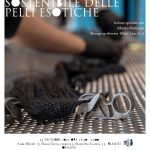 Previous Post
Previous Post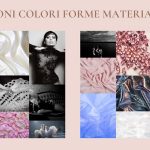 Next Post
Next Post